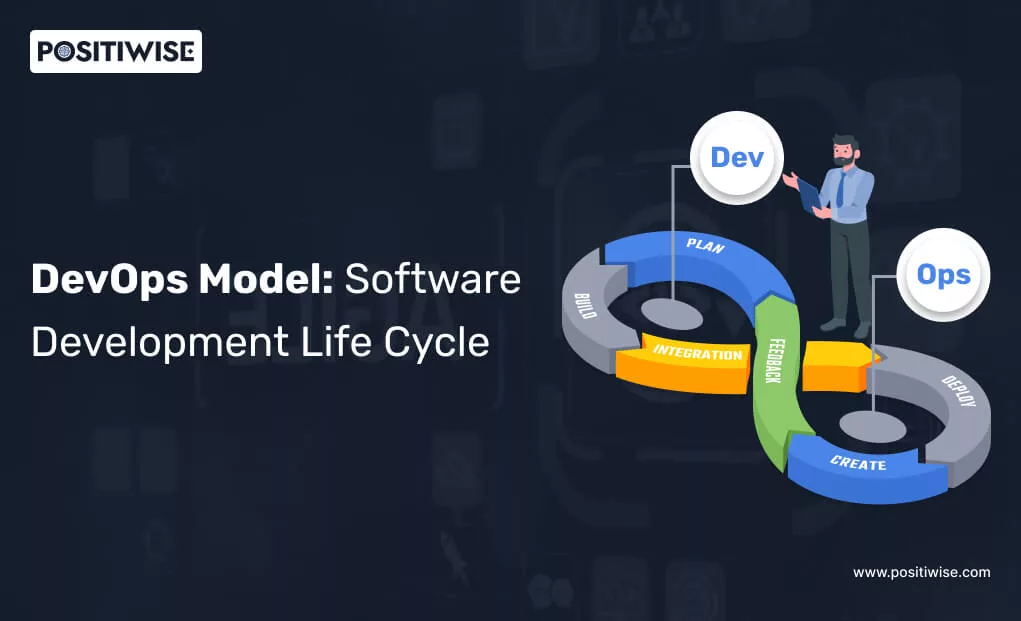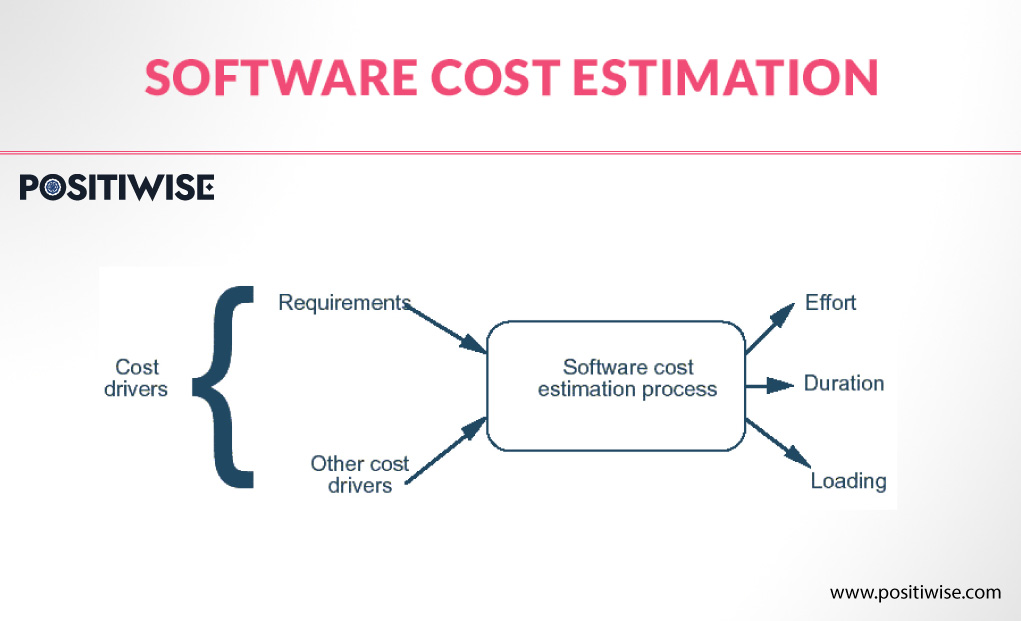Quick Overview:
The term “DevOps” refers to the Development and Operations paradigm of software development, which aims to enhance communication between teams working on software development (Dev) and IT operations (Ops). In this blog, we will explore the various benefits and features of using DevOps model in SDLC.
Introduction
An organization may produce applications and services more quickly than traditional software development procedures by implementing the DevOps model in SDLC, an amalgamation of “development” and “operations.” Due to this speed, organizations can compete more successfully in the market and provide better customer service. Development and operations teams collaborate across the whole computer program life cycle, from development and testing to deployment and operations, using the DevOps paradigm.
What is DevOps Model and DevOps Security?
The discipline and practice of protecting the whole DevOps surroundings via strategies, rules, processes, and technology is known as DevOps security or DevSecOps. According to the DevSecOps tenet, security must be included in every stage of the DevOps model in SDLC, from conception to design to build to test to release to support to maintenance and beyond.
Conventional security works under the premise that security flaws in a system may be found and fixed before it is released once it has been created. Traditional security procedures come too late in the creation cycle, and more active design and delivery of software created via iteration with the shift to a DevOps paradigm are needed. As a result, they may need help to provide services and apps at speed.
Everyone on a DevOps team starts to focus on security when they use DevSecOps. Implementing security choices quickly and widely without compromising safety is the aim of DevSecOps. Release engineering and security teams work together flexibly and continuously as part of DevSecOps. “Building secure code” and “speed of delivery” are combined into one simplified procedure. Iterations of security testing are performed without delaying delivery cycles.
DevOps Lifecycle: Essential Elements
Faster delivery times are achieved via the DevOps model in SDLC, which optimizes development processes from beginning to end and involves the organization in continuous development. The following seven steps make up the majority of this procedure.
Continuous Improvement
Writing code and organizing the program are aspects of continuous development. The entire process is divided into more manageable development cycles in this case. The DevOps team may expedite the entire software development process with the help of this method. This stage outlines the development cycle’s vision and helps developers comprehend project requirements.
While various version control systems are used to manage code, no DevOps technologies are needed for planning. For source code maintenance, JIRA, Git, Mercurial, and SVN are popular technologies. Other tools, like Ant, Gradle, and Maven, are also available to package the programs into executable files. The following step in the DevOps lifecycle receives these executable files.
Ongoing Incorporation
Continuous integration, or CI, includes various stages connected to the testing procedure. Clients also provide material to be included in the program to add new functionality. During this stage, most changes are made to the source code. CI takes on the role of the central location for daily or monthly resolution of these frequent adjustments. Code review, packaging, integration, and unit tests are all part of building code.
Because they are constantly changing, engineers can identify issues early on and fix any that may arise. New code functions are continuously integrated with the current source code during this phase. Because of ongoing enhancements, the updated code works with the system as a whole. It aids in obtaining the most recent code and preparing an executable build.
Ongoing Examination
The testing stage of the DevOps lifecycle comes next, during which the created code is examined for flaws and problems that could have crept in. Assessing the generated software’s usability through quality analysis (QA) is crucial. Determining if the program satisfies the client’s specifications depends on the QA process’s successful conclusion.
Continuous testing uses automation technologies like JUnit, Selenium, and TestNG, allowing the QA team to examine several code bases simultaneously. By doing this, it ensures that the generated program functions flawlessly.
Furthermore, continuous testing uses Docker containers to mimic the entire test environment. All the components needed to run an application—system tools, standard libraries, dynamic code, and settings—are included in a single, lightweight executable package called a Docker container. Selenium and other automation technologies are used for automated testing; TestNG or another automation tool is used to create reports. A continuous integration platform, Jenkins makes it feasible to automate the complete testing process.
Ongoing Implementation
Without compromising the functionality of the application, continuous deployment, or CD, guarantees hassle-free product release. During this step, it is important to make sure the code is deployed precisely on all accessible servers. Developers can resolve issues more promptly and accurately since this technique expedites the feedback mechanism and eliminates the necessity for planned releases. Configuration management using containerization technologies facilitates continuous deployment. Consistency between test, development, preparation, and production environments is more accessible with containerization tools like Vagrant.
The process of raising virtualization to the status of an operating system is known as containerization. Once your firm has an automated testing environment that you can rely on, you will profit from continuous deployment. Continuous deployment is a phase in which configuration management is critical. It entails setting up and upholding the app’s functional requirements consistently. Ansible, Puppet, and Chef are popular DevOps configuration management technologies that facilitate the rapid deployment of new code.
Ongoing Criticism
Constant feedback is necessary to determine and evaluate the application’s ultimate result. Information is essential since it contains all the facts on the software’s performance and any potential problems. It also includes recommendations from the program’s end users.
Ongoing Observation
Software performance must be monitored to ascertain the total effectiveness of product production. This stage handles crucial data regarding the created application. By continuously watching it, developers can see broad trends and gray areas in the software where further work is needed.
The operational phase of continuous monitoring aims to increase the software application’s overall efficiency. Additionally, it keeps an eye on the app’s performance. It is among the most critical stages of the DevOps lifecycle.
Explore the Pros and Cons of DevOps Model
The operational and cultural approach known as “DevOps” aims to eliminate divisions between the development and operations teams. It entails establishing a smooth software creation and distribution pipeline via automation, cooperation, and continuous integration.
| Pros of DevOps | Cons of DevOps |
|---|---|
| Enhanced Cooperation Multidisciplinary groups contribute to the process’s overall efficiency. Collaboration and communication lead to smoother and enhanced communication amongst the teams. | First Implementation Difficulties There may be cultural resistance if the team isn’t accustomed to working together. |
| Speedy Delivery The majority of laborious procedures are automated as a result of continuous integration and delivery. Software is deployed quickly because of automated and optimized several procedures. | Cost Factors The equipment and training needed for complex tasks might be expensive. It is necessary to take ongoing maintenance costs into account. |
| Quality Control Continuous software testing is made possible since error detection is fully automated. Continual delivery, persistent enhancement, and continuous development helps early problem identification in DevOps. | Continuous Evaluation and Maintenance DevOps involves a large number of personnel and financial resources, it is time and resource-intensive. Automation dependence can be detrimental. |
| Scalability and Adaptability The combination of teams enables handling a more significant workload. New request is simple to accommodate since programs are regularly updated and tested. | Toolchain Intricacy There is a steep learning curve, new skills are necessary. Merging several teams into one might lead to integration issues. |
| Improved Efficiency Software developers may concentrate on more important things, like creating new programs, by automating repetitive processes like updates and error detection. The breakdown of departmental silos allows for resource efficiency, which essentially unites teams into one. | Security Issues Because the security team still operates in silos, weaknesses and breaches may emerge. Specific individuals are granted access control and permissions, depriving others of the same privileges. |
Increased Contentment with Clients WIth Innovative Thinking
It is feasible to offer features quickly. Short releases happen more quickly, bug fixes are made more quickly, and mistakes are more visible. DevOps responds quickly to user input. Silos are broken down, which speeds up operations, testing, and development. When software engineers can concentrate more on creating creative solutions for challenges, their creativity and willingness to experiment increase; when a large portion of the process is automated, issues may be identified promptly, promoting continuous improvement.
Effective team deployment leads to effective infrastructure use. DevOps automates manual operations, which results in lower operating expenses. Better software development is facilitated by working with remote teams. The dismantling of silos makes the market more responsive. There is a greater possibility of working with international specialists. Businesses that specialize in outsourcing, enhancing, and other similar IT-related services include Vivasoft.
Permissions and Control of Access
Access is frequently not defined because Role-Based Access Control (RBAC) is not implemented. Deep authorization checks are not conducted, and periodic authorization audits are not established. The foundational elements of the DevOps methodology are cooperation and communication. The most crucial element in the DevOps lifecycle is continuity. The development system will become distracted if steps in the DevOps lifecycle are skipped. Discontinuity will cause flaws to be discovered too late, impairing the software’s overall performance. The goal of the DevOps technique is to increase the productivity of software products. To succeed and remain ahead of the curve, business enterprises must adhere to DevOps model in SDLC best practices.
Collaboration is facilitated by automating the software delivery process, which physically unites the roles and processes of development and operations. All company areas may more closely align on projects and goals when communication between operations, marketing, sales, and developers exists. DevOps teams can produce quickly, safely, and consistently thanks to DevOps techniques like continuous integration and delivery. DevOps teams can swiftly address issues by tracking the performance of apps through monitoring and logging.
To Conclude
You have an advantage over other strategies that have lately gained traction by utilizing DevOps model in SDLC. Every company and person must understand that the change will take time. Everyone has to be aware of it. If your staff understands the advantages of the DevOps paradigm, they will continue to be dedicated to improving their skills.
Without question, DevOps has revolutionary effects on software development. However, for implementation to be effective, it is essential to recognize and overcome possible difficulties. The most significant results may be obtained by collaborating with knowledgeable software developers. These firms are familiar with DevOps procedures and can successfully navigate the DevOps landscape. Adopting DevOps is becoming more and more necessary as the industry develops if you want to stay successful in the software development space.
Expert in Marketing Strategy and Brand Recognition
Jemin Desai is Chief Marketing Officer at Positiwise Software Pvt Ltd, he is responsible for creating and accelerating the company’s marketing strategy and brand recognition across the globe. He has more than 20 years of experience in senior marketing roles at the Inc. 5000 Fastest-Growing Private Companies.






